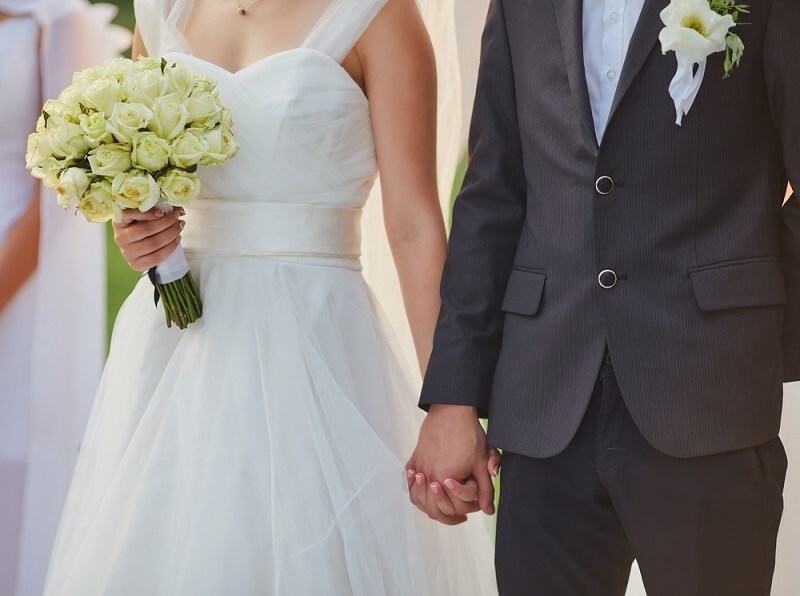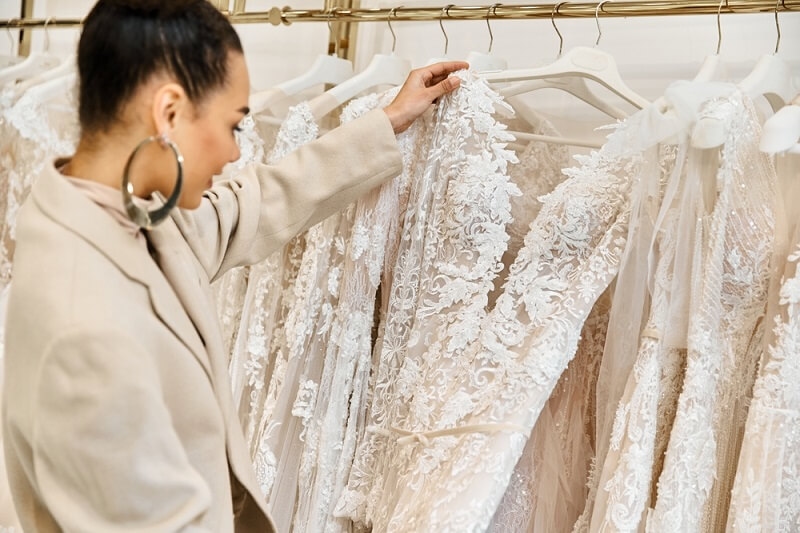
Choosing a wedding dress is one of the most exciting yet stressful parts of planning a wedding, especially for first-time brides. With countless fabrics, necklines, trains, and embellishments, it's easy to get overwhelmed and bogged down in options. This is why offering a comprehensive explanation of wedding dress styles is so essential for all brides-to-be. If you're aware of the different wedding dresses along with a digital wedding dress silhouettes guide, you'll have the confidence to make an educated decision. Most importantly, knowing how to choose the wedding dress silhouette that flatters your figure ensures you'll feel and look beautiful, comfortable, and confident on your wedding day.
This written guide will explore the common wedding dress silhouettes, fabrics, and details, as well as offer helpful tips to make your decisions easier.
Your wedding dress is not an outfit; it is who you are, your taste, and how your wedding feels. For most brides, without knowing the dress silhouettes and categories of gowns, they feel completely at sea or do not know what looks good on their body. By having wedding dress styles defined, you can save time during appointments, communicate better with bridal consultants, and focus on narrowing down options that really suit your body shape, comfort level, and wedding vision.
Silhouette is one of the most important aspects of wedding fashion in that it is the shape of the dress as it falls on your body. Brides tend to start with looking at the wedding dress silhouettes guide because silhouettes determine the entire appearance of the gown. Below are the most common ones explained:
Also referred to as the "princess dress," the ball gown is a corseted bodice accompanied by a full skirt. Ideal for the bride seeking a fairytale moment, the style cinches at the waist and makes a dramatic statement.
The universally flattering shape, A-line wedding gowns feature a fitted bodice and a skirt that slowly flares out like the letter "A." They are ideal for most body shapes and ideal for informal and formal weddings as well.
This close-fitting wedding gown clings to the body from the bust to the knee before wide-out flaring. Mermaid wedding gowns accentuate curves and are ideal for brides who desire a glamorous, red-carpet look.
Like the mermaid but less dramatic, the trumpet dress flares out around mid-thigh, providing a balance between snug sophistication and movement ease.
A very low-key option, the sheath silhouette skims the body without much volume. It's sleek, contemporary, and ideal for beach or destination weddings.
Ending at the knee or ankle, tea-length dresses add a vintage, retro look. They're beautiful and flattering for brides who want traditional yet contemporary.
With this style silhouette guide, brides can quickly reduce their options and eliminate dress styles that don't fit their comfort zone or style.
While the silhouette informs the shape, other factors distinguish wedding gowns. These factors are neckline, sleeves, fabrics, and embellishments.
Knowing these specifics makes wedding gowns of various styles one of the least intimidating things to navigate..

No matter how lovely a gown is, it will never feel great if it doesn't flatter or fit your body type properly. That's why it's so important to know how to choose the right wedding dress shape for your body.
Here's a general guideline:
When brides focus on how to choose the right wedding dress shape, their dress will fit their best features, and they will feel comfortable and confident throughout the wedding day.
Two considerations when selecting your dress style are the theme and venue of your wedding.
Even with wedding dress styles explained, many brides fall into common pitfalls:
Having wedding dress silhouettes defined in such detail provides new brides with the courage to face a world that many perceive as intimidating. By using a structured wedding dress silhouette guide, you will discover the different styles of wedding dresses and learn how to choose the correct dress shape for your body shape and wedding venue.
In the end, the perfect dress is the one that makes you appear to be the most beautiful version of you! If you find yourself gravitating towards the elegance of a sheath, the magnificent drama of a ball, or the breezy charm of lace, your wedding dress should be an extension of you and the love story you are celebrating.
This content was created by AI